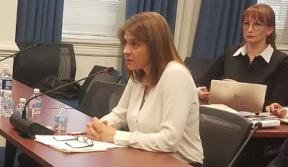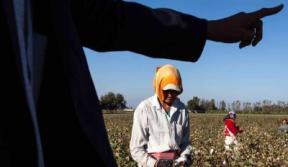The International Labor Rights Forum continues to passionately address the forced labor that occurs on tobacco farms with extensive research and ILRF’s Tobacco Campaign. ILRF was excited to support WOJA and Otañez in their efforts to address the hazardous industry of tobacco that is riddled with child laborers and the labor of pregnant women. A shocking 78% of children between the ages of 10 to 14 and 55% of 7 to 9 year olds work full or part-time with their parents on tobacco farms internationally.
The tobacco industry in Kenya conceals the fact that it benefits from unpaid child labor. Although children mostly tend to the tobacco crop during school holidays, farm authorities and parents withdraw children from school during the school term to help tend the tobacco plantations during planting, weeding, spraying and harvesting seasons. During the times when intensive labor is required on the farms, tobacco farmers fall back on their families, including children, to tend the crop.
While working on farms, children are exposed to toxic pesticides and suffer from headaches, nausea, constipation, skin and eye irritation and chest pain. Exposure of children to dangerous toxins does not end with the harvest. They are exposed to nicotine and dust from leaves during the curing process as they prepare the tobacco for sale. Their involvement in farming tobacco takes them out of school and robs them of their childhood since much of their time is spent on the tobacco farms. Child tobacco laborers perform poorly in school or drop out, and receive little or no benefit from tobacco farming.
What is even more disturbing is that the children are not the only ones that are living under these treacherous conditions. Pregnant women, some eight months into their pregnancy, are forced to work under these conditions. As seen in the video, long enduring hours leave women exhausted, but are still required to come into work the next day. Even after injury and pain, owners on the farm hardly check in with the women to give them proper treatment or excuse them for rest.
The exposure to toxic pesticides leads the women to suffer from headaches, nausea, constipation, skin and eye irritation and chest pain, all in which may definitely affect the unborn baby. Not to mention the long hours, heavy carrying, and bending over that these women consistently endure.You may ask yourself, why don’t these women crop another type of plant? Unfortunately, it is much more complex than that. Women are often given a specific quota before the harvest season has even begun and are expected to meet that quota. During the harvest, if issues of natural disasters or illness occur they are still expected to meet the desired amount and if they do not, women are forced to continue working the following season until it is met.
Those that benefit most are the multi-billion dollar tobacco companies that strip the dignity and life from these workers in order to gain their own personal profit. Some of the top tobacco companies include Altadis, Altria Group, British American Tobacco, Bulgartabac, and Imperial Tobacco Group. The research, workshops, and videography that were produced by WOJA and Otañez assisted in the identification of key farms where the exploited labor of pregnant women and child labor exists. The harmful and constrictive labor of pregnant women and children continues to undermine their dignity and self-value. We must be aware of these conditions and those companies that are benefiting tremendously from the exploited and low-wage labor of these women and children.

